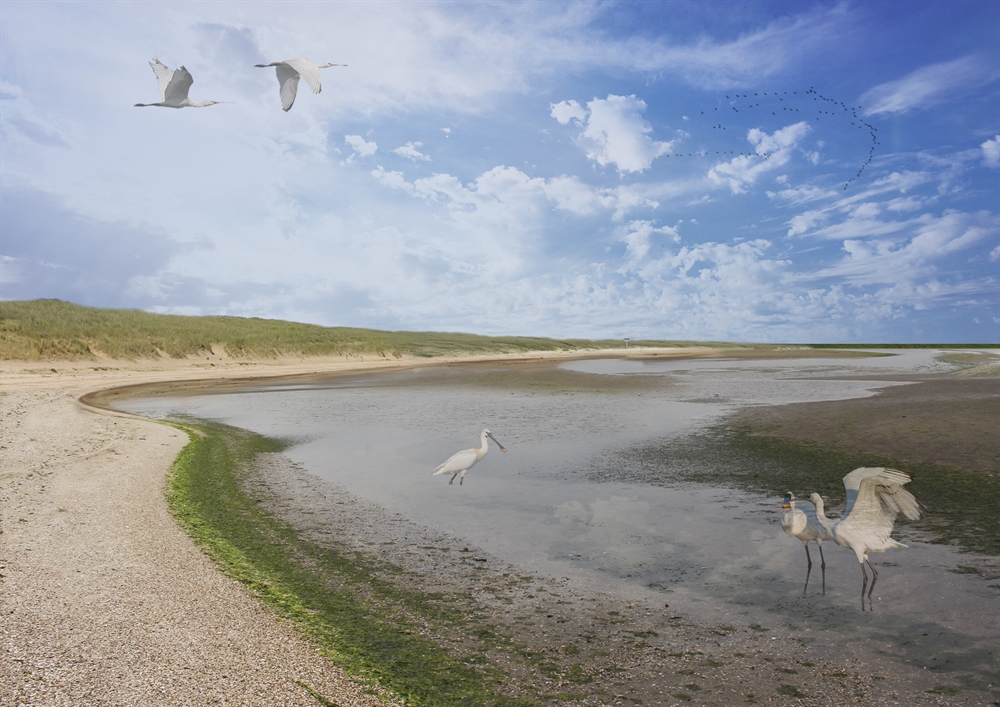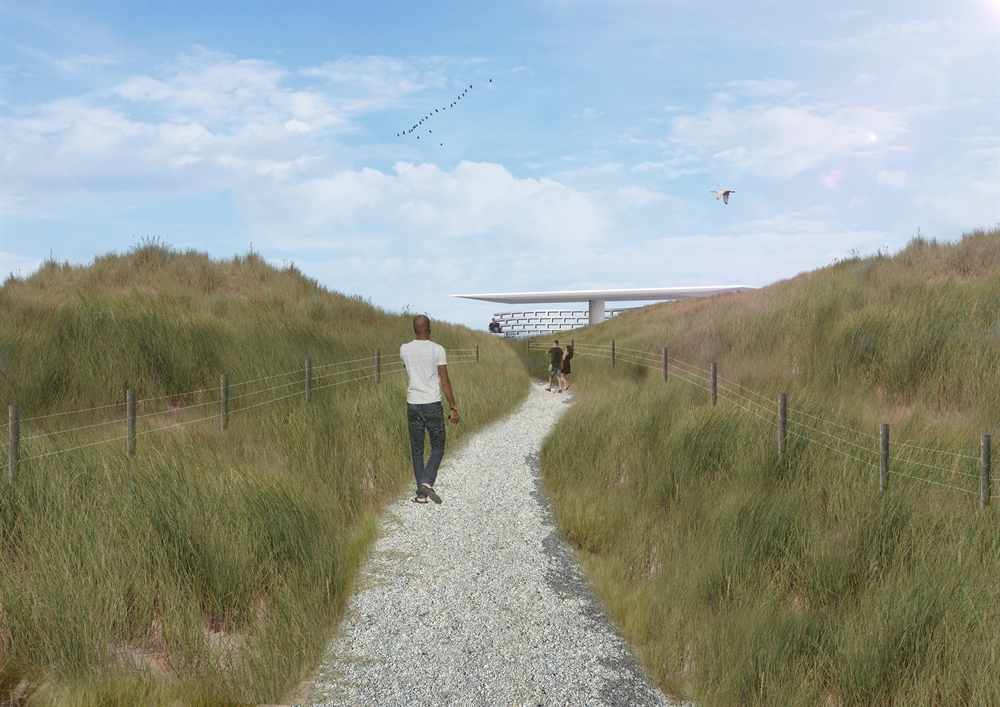Texel is expanding: unique and future-proof nature
The three kilometres long Prins Hendrik dyke on the island of Texel no longer meets the safety requirements and is undergoing unique, natural reinforcement with sand. In front of the current dyke, a diverse sandy area will be constructed, whose dynamic character befits the Wadden Sea. The Prins Hendrik sand dyke project is killing two birds with one stone: future-proofing the dyke and enhancing natural values in the Wadden Sea. The innovative improvement method, involving a flexible design that accommodates future rises in sea level, will keep flood risk management sustainably up to par.
In 2006, several sections of the Texel Wadden Sea dyke failed the inspection. The dyke is largely being reinforced in a traditional manner. A sandy solution has been chosen for the Prins Hendrik dyke, the section between the Royal Netherlands Institute for Sea Research NIOZ and Oudeschild, an idea suggested by several (interest) groups on the island of Texel. The Ministry of Infrastructure and Water Management, the province of Noord-Holland, the Wadden Fund, the municipality of Texel, and the Hollands Noorderkwartier district water control board have joined forces to realise this unique dyke improvement.
A row of dunes will be constructed on the sea side of the dyke, preceded by a diverse salt marsh and mud flat area, which will serve as an attractive resting, breeding, and foraging area for a wide range of wading birds. The current dyke will lose its damming function but will be retained as a line element. Its flexible design will enable the “sand dyke” to accommodate future changes in both the assessment framework and the conditions in the Wadden Sea area (such as a rise in sea level).

The Prins Hendrik sand dyke ties in with the preferential strategy for flood risk management of the Wadden Sea area set down in the Delta Plan: important values of the Wadden Sea area will be retained by opting for measures that are as natural as possible, while substantiating an integrated and area-specific implementation of measures at the regional level.
In 2018, contractor Jan de Nul will commence the execution; the work will be completed by the end of 2019. A new cycle track and a footpath with a bird watching station will enable everyone to enjoy this new landscape.

The contractor will remain responsible for maintenance of the project for five years. A comprehensive Management and Monitoring Plan has been set down for both the realisation phase and the maintenance phase.
Lessons to be learned from the project
- The sandy solution complies with the wishes of the municipality and interest groups on the island of Texel.
- Close collaboration and looking beyond the boundaries of individual taskings have resulted in an integrated, sustainable, broadly supported, and properly funded solution (including grants).
- The administrative willingness of project partners to take risks constitutes an important factor for success.
- The Hollands Noorderkwartier district water control board is realising the project on a risk-bearing basis.
- This is the first time a permit has been granted under the Nature Conservation Act for a development such as this one in the Natura 2000 Wadden Sea area. An appropriate “new style” assessment has been formulated, revolving around the so-called “adaptation strategy”.
Contactperson
Neeltje Annink
Hoogheemraadschap Hollands Noorderkwartier (HHNK)
n.annink@hhnk.nl
06 20 13 28 72
